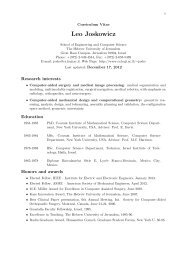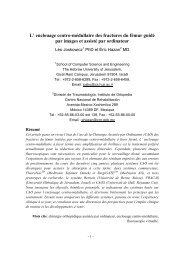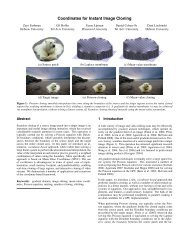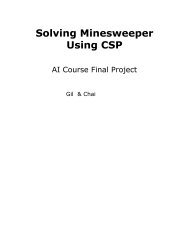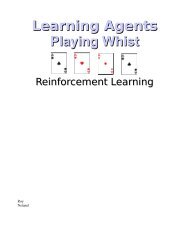TEL AVIV UNIVERSITY Gaddi Blumrosen
TEL AVIV UNIVERSITY Gaddi Blumrosen
TEL AVIV UNIVERSITY Gaddi Blumrosen
You also want an ePaper? Increase the reach of your titles
YUMPU automatically turns print PDFs into web optimized ePapers that Google loves.
The JSO algorithm selects an optimal set of the transmitter antenna weights, which<br />
optimizes, in the ML sense, the reception of an OSTBC transmitted code, as a<br />
function of the channel state information and the reliability of the information at the<br />
transmitter. It can be seen as a smart compromise, sometimes simply as a switch,<br />
between OSTBC and BF. As a general ML approach to the problem of weighted<br />
OSTBC transmission, this algorithm is definitely superior to maximization of signal<br />
strength (maximum SNR approaches) where only first SNR moment is used and also<br />
to BF based only on channel correlation (second channel moment) since in slow<br />
fading scenario the nonzero channel mean value, e.g. in Rician channel, can<br />
contribute to performance.<br />
We have studied the JSO algorithm in Rayleigh, Rician and correlated channel fading<br />
and examined, by simulation, its sensitivity to errors in its parameters. We found that<br />
a 10% error is equivalent in Rician fading, according to SNR/BER graphs to 0.3dB<br />
degradation in performance and to 0.2dB in Rayleigh channel. This motivated us for<br />
suggesting a simple approximation function to the exact solution for Rayleigh and<br />
Rice channels which fulfills the same asymptotical properties as the ML optimal<br />
solution.<br />
We have shown that this approximation performs quite close to the optimal JSO<br />
solution for a typical range of channel parameters. With the more manageable and<br />
simpler approximation function, we can easily maintain the behavior of the solution<br />
as a function of CSI parameters and thus the approximation may be used for<br />
implementation and for deriving antenna weights sensitivity to changes in CSI<br />
parameters in a simple manner. The computational benefit of the approximation,<br />
increases with the number of transmit antennas.<br />
Correlated fading causes degradation in performance in both OSTC and BF.<br />
Consequently, JSO for the case of correlated fading, which is a set of non linear<br />
equations, also has degradation in performance. We derived a numeric way for<br />
obtaining the antenna weights for the correlated channel fadings, examined<br />
analytically and by simulation the performance loss of BF, OSTBC and “uncorrelated<br />
fadings JSO” and suggested an approximation to the weights which discard the need<br />
for numerical calculations and should be further studied.<br />
A future work in this field can generalize the approximation for the case of MIMO<br />
channel, add channel coding, simulate the STC techniques derived in this work in<br />
different channel scenarios and standards, study the estimation of the various CSI<br />
parameters as a function of real measurements such as measurement accuracy,<br />
feedback rate and quantization ratio and TDD or FDD.



